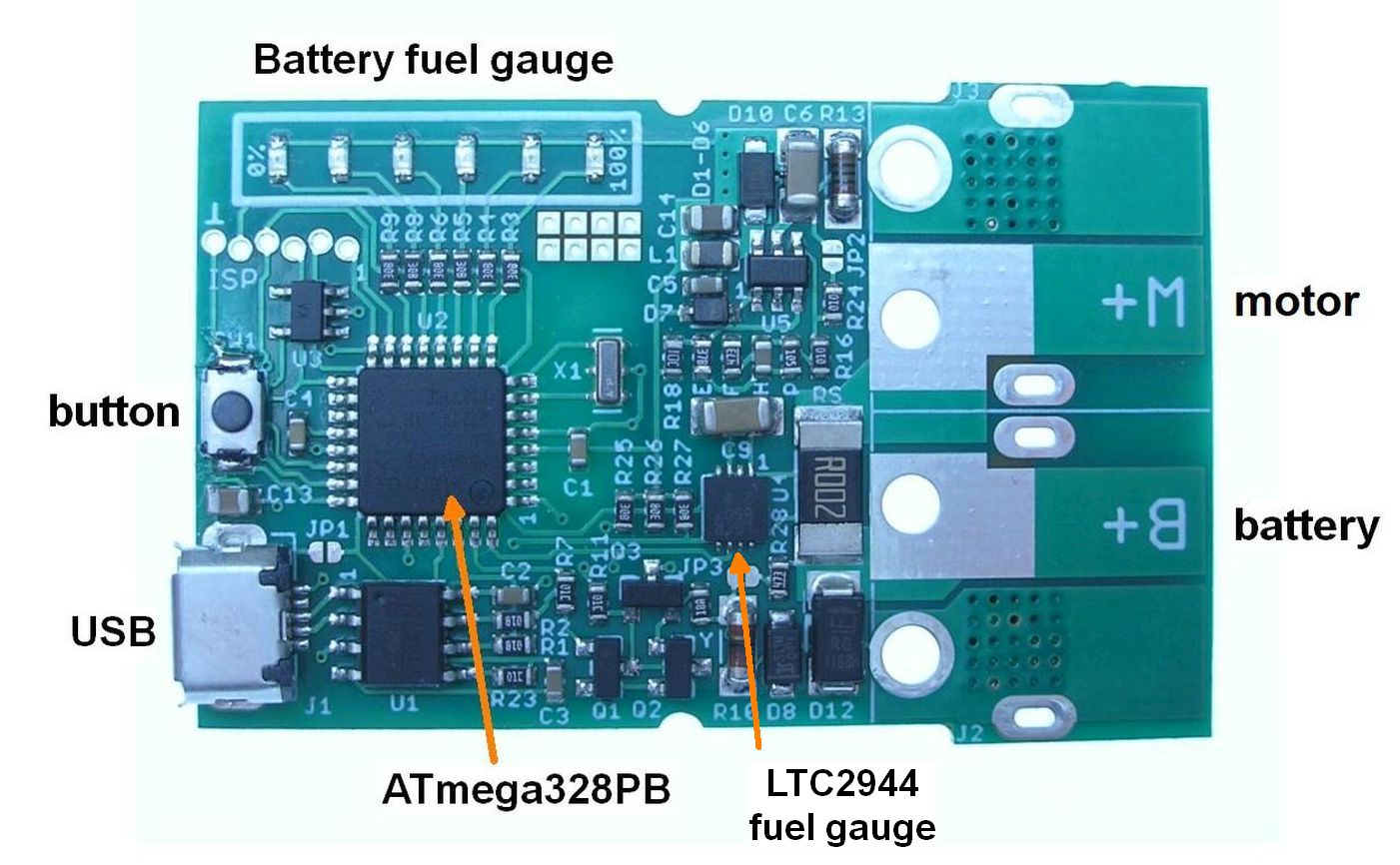Bluetooth Watt meter dongle
Introduction
This device has two uses:
- Yamaha hacking dongle to use any 3rd party battery instead of the original Yamaha battery
- Bluetooth Watt meter dongle for use as fuel gauge and Watt meter. Described in this article.
 Bluetooth energy monitor / fuel gauge / Watt meter
Bluetooth energy monitor / fuel gauge / Watt meter
See also
- User manual
- Yamaha mid-drive motor dongle to use 3rd party batteries
- Bluetooth Watt meter cockpit
- Two-wire current-controlled bus
- Maxun e-kit
Sale on Tindie
The dongles are for sale on Tindie, see HERE.
This Bluetooth Watt meter dongle belongs to the Bluetooth Watt meter cockpit which will be produced and sold in the future.
Please tell me if you have interest.
Properties
- The measured values (Volt, Ampere, Watt, Amperehour) are sent by bluetooth to one or more meters on the handlebar.
- The capacity is also displayed with 6 LEDs on the board.
- It is suitable for batteries up to 48V, provided that the maximum voltage never exceed 60V.
- The electronics is protected against reverse connection of the battery voltage.
- In this application, it has nothing to do with Yamaha and it is just a universal fuel gauge / Watt meter.
Advantages
These are the advantages compared to other fuel gauge / Watt meters:
- It measures the real capacity in Ampere x hour
Other fuel gauges often calculate the capacity based on the battery voltage, which is very inaccurate. - The capacity is stored in a non-volatile memory.
Normally, a fuel gauge should never be disconnected from the battery, otherwise the capacity value will be lost. Therefore a fuel gauge is always built inside the battery case. But an externally connected fuel gauge, like this one, will be disconnected from a battery often since a battery can have a power on/off switch. So we store the battery capacity in an EEPROM. - The dongle can be programmed directly via USB.
- The battery capacity is measured very accurately with an LTC2944 fuel gauge IC, not just simple voltage measuring.
- Fuel gauge indication with 6 LEDs.
Description
You can find more information in the Yamaha hacking dongle article, but skip the Yamaha sections.
The dongle has to be equipped with the NRF24L01 SMD wireless module.
The big advantage of the Bluetooth Watt meter dongle is that the system is split in two, no thick power cables are needed to the meters on the handlebar as with other gauges. The dongle can be connected directly and nearby to the output of the battery. The measured values (Volt, Ampere, Watt, Amperehour) are sent by bluetooth to one or more meters on the handlebar. I have developed special lightweight round 40mm LED meters for this:
Difference with the Cycle Analyst V3
Note that I also have another product that works together with the Bluetooth Watt cockpit meters: the Maxun e-kit controller extension board.
With the Cycle Analyst , Grin Technologies in Canada has developed a very nice product. Because I will definitely get questions about that, I will explain here what the difference is between my Bluetooth Watt meter and the Cycle Analyst.
The main difference is that the Cycle Analyst can control the speed through a torque sensor on the crankshaft, while my system only can control the speed using a thumb throttle switch.
| Cycle Analyst V3 | Bluetooth Watt meter dongle | e-kit extension board | |
| Torque sensor input | Yes | No | No |
| PAS input | Yes | No | Yes |
| Up-down throttle | No | No | Yes |
| Electronics / display separated | No | Yes | Yes |
| Motor power control | Yes | No | Yes |
| Accurate Coulomb counter | No | Yes | Yes |
Connections
 Wiring top side
Wiring top side  Wiring bottom side
Wiring bottom side
The connections differs according to the type of battery:
 Wattmeter connections common port
Wattmeter connections common port Wattmeter connections dual port
Wattmeter connections dual port
User manual
See for the user manual here.
Links



